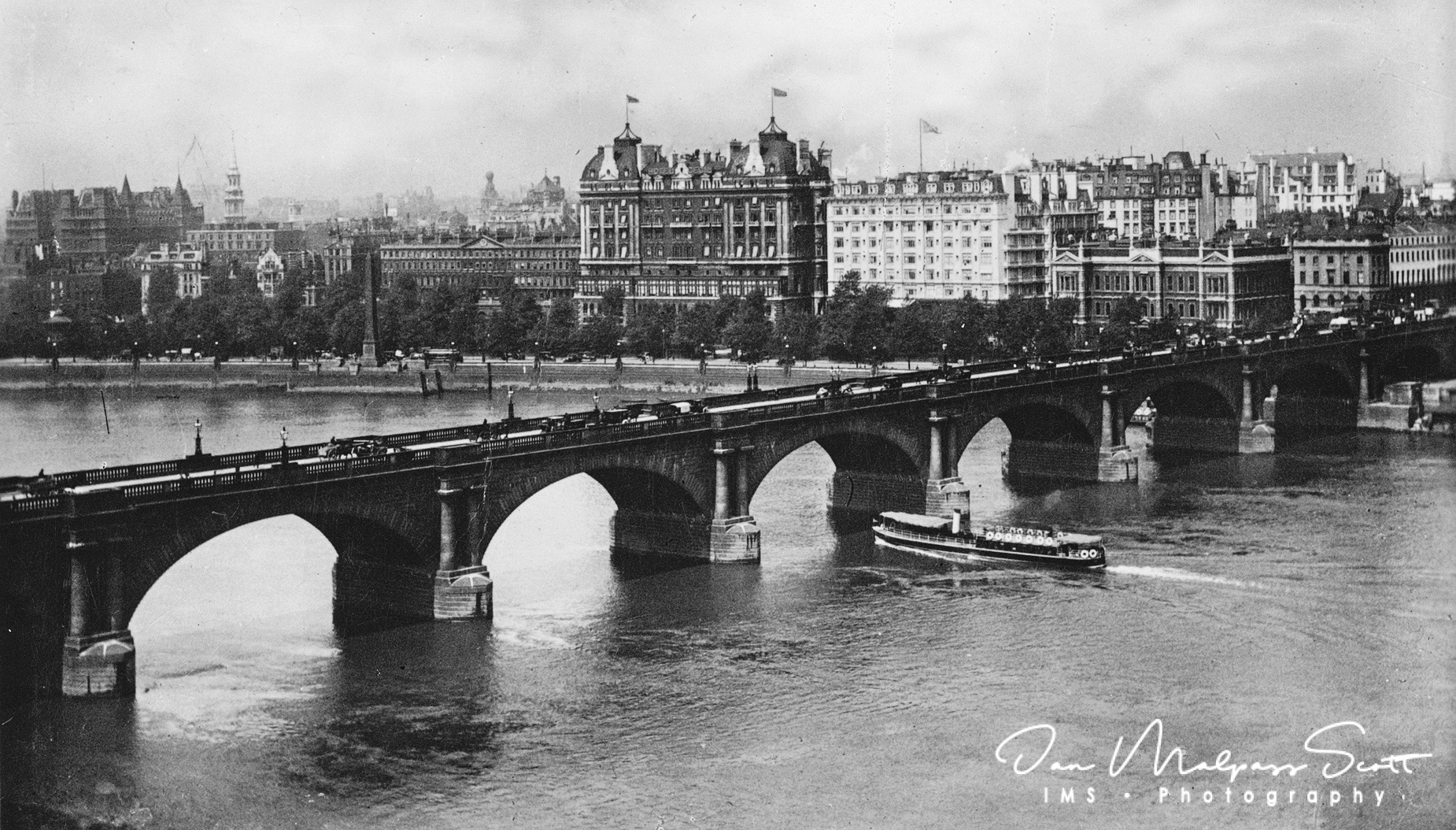
Waterloo Bridge is a road and foot traffic bridge crossing the River Thames in London, between Blackfriars Bridge and Hungerford Bridge. Its name commemorates the victory of the British, the Dutch and the Prussians at the Battle of Waterloo in 1815. Thanks to its location at a strategic bend in the river, the views from the bridge (of Westminster, the South Bank and the London Eye to the west, and of the City of London and Canary Wharf to the east) are widely held to be the finest from any spot in London at ground level.
The first bridge on the site was designed in 1809-10 by John Rennie for the Strand Bridge Company and opened in 1817 as a toll bridge. The granite bridge[1] had nine arches, each of 120 feet (36.6 m) span, separated by double Doric stone columns, and was 2,456 feet (748.6 m) long, including approaches–1,240 feet (378.0 m) between abutments–and 42 feet (12.8 m) wide between the parapets. Before its opening it was known as the Strand Bridge.
During the 1840s the bridge gained a reputation as a popular place for suicide attempts. In 1841 the American daredevil Samuel Gilbert Scott was killed while performing an act in which he hung by a rope from a scaffold on the bridge. In 1844 Thomas Hood wrote the poem The Bridge of Sighs, which concerns the suicide of a prostitute there.
Paintings of the bridge were created by the French Impressionist Claude Monet and the English Romantic John Constable.
The bridge was nationalised in 1878 and placed under the control of the Metropolitan Board of Works, which removed the toll from it.
Michael Faraday tried in 1832 to measure the potential difference between each side of the bridge caused by the ebbing salt water flowing through the Earth’s magnetic field.
From 1884 serious problems were found in Rennie’s bridge piers, after scour from the increased river flow after Old London Bridge was demolished damaged their foundations. By the 1920s the problems had increased, and settlement at pier five necessitated the closure of the whole bridge while some heavy superstructure was removed and temporary reinforcements were put in place.
London County Council decided to demolish the bridge and replace it with a new structure designed by Sir Giles Gilbert Scott. The engineers were Ernest Buckton and John Cuerel of Rendel Palmer & Tritton.
Demolished 1935
Built: 1817
Demolished: 1935
Architect: John Rennie


